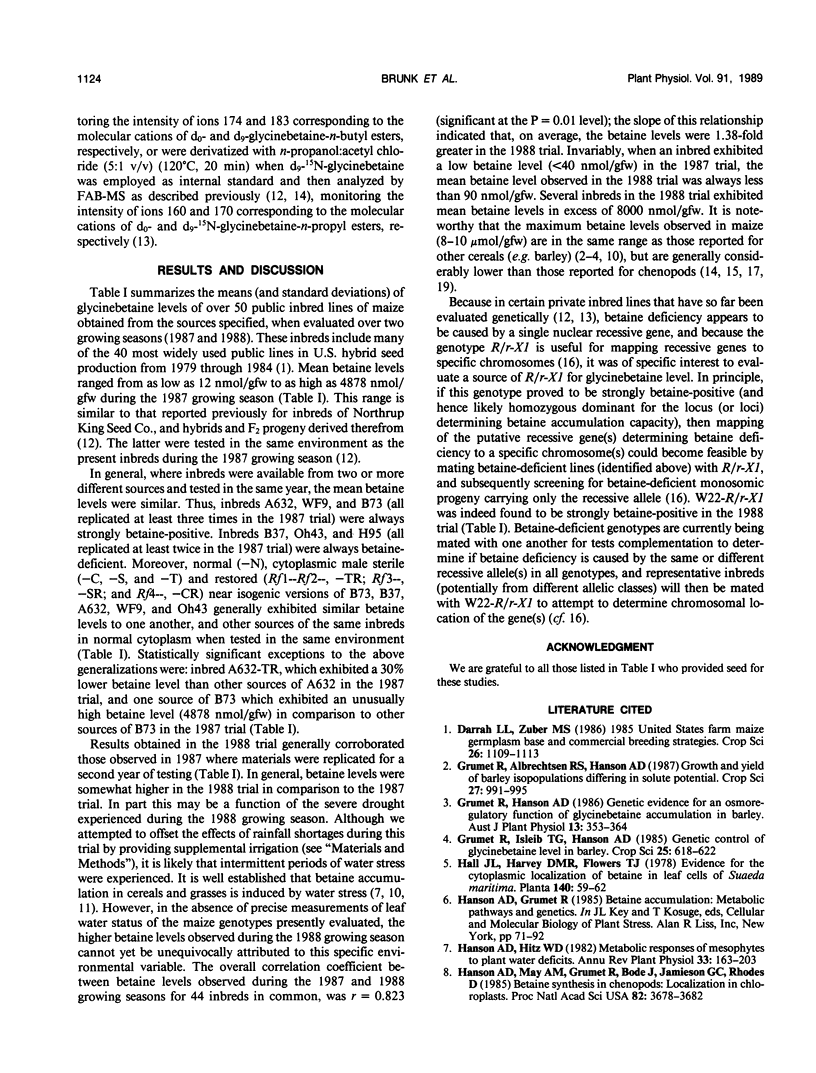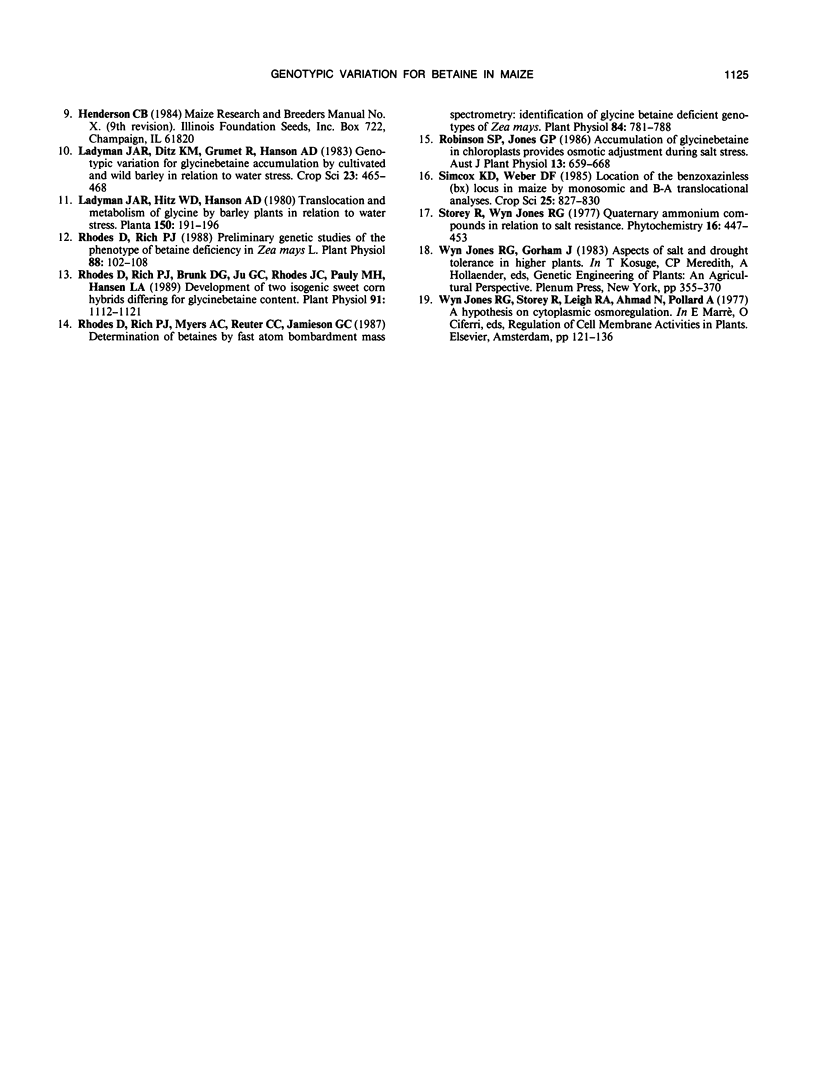Abstract
Screening of a range of public maize (Zea mays L.) inbred lines for glycinebetaine (betaine) content over two growing seasons (1987 and 1988), using fast atom bombardment mass spectrometry, has identified 19 public inbred lines which all exhibit low betaine levels (<100 nanomoles per gram fresh weight). These include common inbreds such as A188, A619, B37, H95, N6, and Oh43. Several inbreds exhibit high betaine levels (3000 to 10000 nanomoles per gram fresh weight); in these strongly betaine-positive inbreds, betaine levels tended to be, on average, 1.38-fold greater in the 1988 growing season presumably in part due to field water deficits experienced during the drought of 1988. Where several different sources of the same inbred line were available (including cytoplasmic male sterile and restored lines of A632, B37, B73, Oh43, and WF9), betaine levels were found to be similar when the inbreds were tested in the same environment. Because W22-R/r-X1 was found to be strongly betaine-positive, it should be possible to map the putative recessive gene(s) determining betaine deficiency to specific chromosome(s) from monosomics resulting from crosses between W22-R/r-X1 and betaine-deficient lines.
Full text
PDF



Selected References
These references are in PubMed. This may not be the complete list of references from this article.
- Hanson A. D., May A. M., Grumet R., Bode J., Jamieson G. C., Rhodes D. Betaine synthesis in chenopods: Localization in chloroplasts. Proc Natl Acad Sci U S A. 1985 Jun;82(11):3678–3682. doi: 10.1073/pnas.82.11.3678. [DOI] [PMC free article] [PubMed] [Google Scholar]
- Rhodes D., Rich P. J., Brunk D. G., Ju G. C., Rhodes J. C., Pauly M. H., Hansen L. A. Development of two isogenic sweet corn hybrids differing for glycinebetaine content. Plant Physiol. 1989 Nov;91(3):1112–1121. doi: 10.1104/pp.91.3.1112. [DOI] [PMC free article] [PubMed] [Google Scholar]
- Rhodes D., Rich P. J., Myers A. C., Reuter C. C., Jamieson G. C. Determination of Betaines by Fast Atom Bombardment Mass Spectrometry : Identification of Glycine Betaine Deficient Genotypes of Zea mays. Plant Physiol. 1987 Jul;84(3):781–788. doi: 10.1104/pp.84.3.781. [DOI] [PMC free article] [PubMed] [Google Scholar]
- Rhodes D., Rich P. J. Preliminary Genetic Studies of the Phenotype of Betaine Deficiency in Zea mays L. Plant Physiol. 1988 Sep;88(1):102–108. doi: 10.1104/pp.88.1.102. [DOI] [PMC free article] [PubMed] [Google Scholar]


